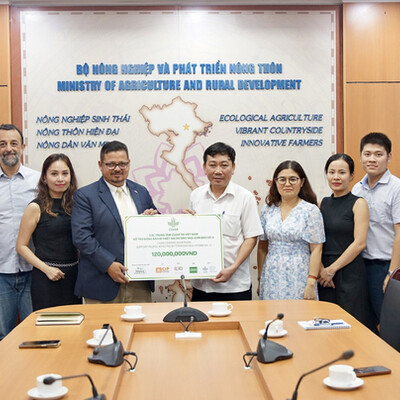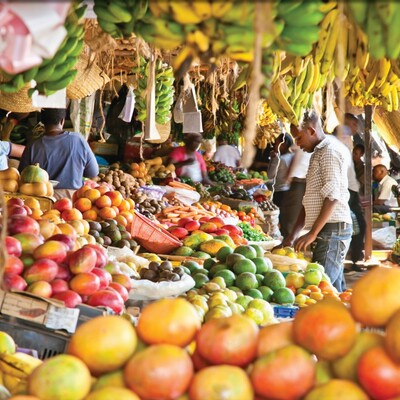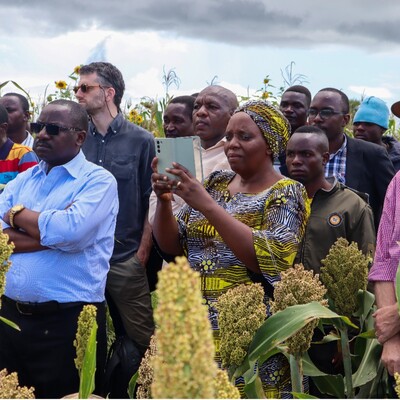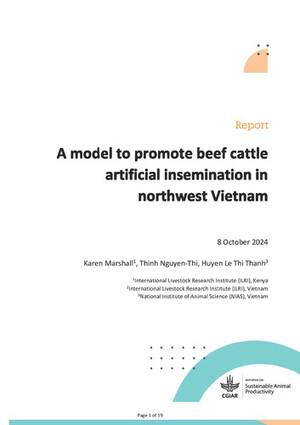
Enlarging on the EAT-Lancet planetary diet report—A fresh look by CSIRO’s Mario Herrero, one of the authors
Mario Herrero, a scientist formerly with the International Livestock Research Institute (ILRI) and now serving as chief research scientist of agriculture and food at Australia’s Commonwealth, Scientific and Industrial Research Organisation (CSIRO), recently gave a seminar at the University of Edinburgh’s Royal (Dick) School of Veterinary Studies. The seminar was organized by Supporting Evidence Based Interventions (SEBI) in collaboration with the Global Academy of Agriculture and Food Security, both hosted by the Royal (Dick) School of Veterinary Studies.
The title of Herrero’s 19 Sep 2019 seminar was ‘Can we feed the planet and stay within planetary boundaries’. He focused on the EAT-Lancet Report on healthy diets (Commission Food in The Anthropocene: The EAT-Lancet Commission on Healthy Diets From Sustainable Food Systems, 16 Jan 2019), to which he contributed, along with 36 other experts.
Hererro showed a ‘horrendogram’ (his droll term for a complicated scientific figure) that distills the findings of three scenarios the study made—on what would happen if food production were intensified, if food waste were reduced and if human diets were to shift. With ‘business as usual’ approaches to global food systems, he shows that by 2050 we are bound to ‘transgress all the planetary boundaries’.
If just diets are changed, he says, ‘we only change greenhouse gas emissions. This is important.’
Shifting diets is not the panacea for solving all the other boundaries; it addresses the greenhouse gas boundary only, because we’ll need a lot more fertilizer and we’ll need a lot of additional land to be able to meet the rest of the diets.
What the report does say is fundamental to achieving the EAT-Lancet diets, Herrero reports, is intensifying food systems to increase yields and halving food waste.
Small is beautiful—and important
‘If you work with smallholder farmers, a lot of people say, “Oh, you’re so romantic. They’re going to disappear.” Is that the case?
Is that the case when you consider that small and medium farms, between 2 and 20 hectares, are actually producing between 50 and 75 per cent of the world’s foods still?
‘Tiny farms are very important in certain places—China, the Pacific, sub-Saharan Africa. But medium farms will also require a lot of sustainable intensification. Donor agencies seem to be very much stuck on the 2-hectare farms, but maybe in some places it is time to move to these semi-commercial systems that have real potential for intensification.’
It is in these developing regions where we have a great proportion of small farms that we really need to bridge yield gaps. That is also a crucial message [of the EAT-Lancet report].
Herrero cites evidence for the fact that more diverse landscapes—he refers to them also as ‘mosaic landscapes’—produce more food—and more nutrients. ‘We need to move beyond our focus on kilocalories’, Herrero says. ‘We need to maintain this diversity to produce rich foods that will help us to remain within planetary boundaries.’
Disruptors
Herrero goes on to name a few ‘disrupters’ that could transform the world’s food production systems. ‘One of the things that we did not do in the EAT-Lancet report was to look at what “wild technology” could do, technology that is coming up in the next five to ten years.’
‘For example,’ says Herrero, ‘putting a nitrogenous gene in cereal crops such as rice and wheat could reduce reliance on nitrogen fertilizer.’ This novel and natural occurring gene variant increases the rate at which plants incorporate nitrogen from the soil. ‘In places like Africa, that could become an enormous disrupter. There’s still a technological frontier out there where we could do a lot more.’
And decoupling livestock from land through a ‘circular economy’, such as through use of ‘safe swill’ to feed livestock, has great potential, Herrero said.
As does turning waste into high-quality feed using sewage as a substrate, he says. ‘Civil engineers are using microbial protein that they hydrolyze and this ends up as a little white powder that you can incorporate in rations for pigs and poultry, thereby replacing soybean meal and reducing pressure on deforestation. This is now possible because energy is cheaper. As the price of energy comes down, all these other options become very, very important.’
Connecting the dots
‘From microbial protein made from sewage all the way to the SDGs, well, that might be a long way to go, but with these “wild technologies”, we need to start developing impact pathways and mental maps of how these could actually work and what are their pros and cons. We need to hypothesize what the links are, what are the kinds of partnerships needed to make this happen. It is fundamental that we think about how to employ these technologies effectively.’
Technology per se is not transformational. We need a full enabling environment. We need to build trust, especially in the ag sector, with so many GM options with a lot of potential but also with little social licence. I think this is the time to start a constructive dialogue with all sectors of society.
Conclusions
Herrero concluded by saying that diets definitely link environment, consumption and health.
This puts us in a very attractive policy-research-development interface to solve several problems at the same time.
In terms of reductions in consumption, Mario agrees that, ‘yes, in many places that is necessary but in other places we need to maintain the consumption of nutrient-rich foods like those from livestock.
‘And it’s increasingly apparent that we need to look at circularity and disruptive technologies as real options to maintain the speed of change that is necessary to achieving a sustainable food system.
I think that in reality the social impacts are the next big frontier in all of these analyses.
What happens to employment? What happens to value chains? To retailers? When you start contracting some industries, what happens? Sustainability is also about the economy.
I think we need to embrace a more comprehensive view of the notion of sustainability to create these pathways to a safer, more sustainable world.
Go here to watch Mario Hererro’s full presentation.
Read some of ILRI’s responses to the EAT-Lancet planetary diet report:
The many gifts of livestock—A view from Kenya, ILRI News blog, 17 Mar 2019.
A world where livestock are part of the solution—Ethiopia state minister, ILRI News blog, 8 Feb 2019.
Should we eat red meat? Depends on who’s eating—New York Times, ILRI News blog, 22 Jan 2019.
Lawrence Haddad on the ‘Great Food Transformation’ promoted by the EAT Lancet ‘planetary health diet’, ILRI Clippings blog, 19 Feb 2019.
Where nutrients and protein sourced from livestock remain vital—Crawford Fund, ILRI Clippings blog, 2 Feb 2019.
IFPRI’s Shenggen Fan on the ‘differentiated approach’ needed to navigate today’s food systems, ILRI Clippings blog, 26 Jan 2019.
With huge variations in meat consumption, we’re ‘all in this existential crisis together’—Vox, ILRI Clippings blog, 25 Jan 2019.
Read a recent World Economic Forum-ILRI white paper: Meat: The Future Series—Options for the Livestock Sector in Developing and Emerging Economies to 2030 and Beyond, Jan 2019.
For more information, visit the Why Livestock Matter microsite.


















